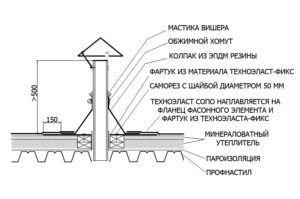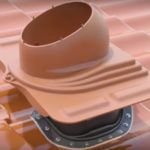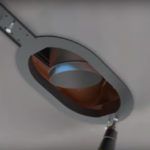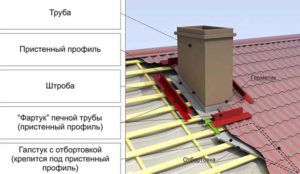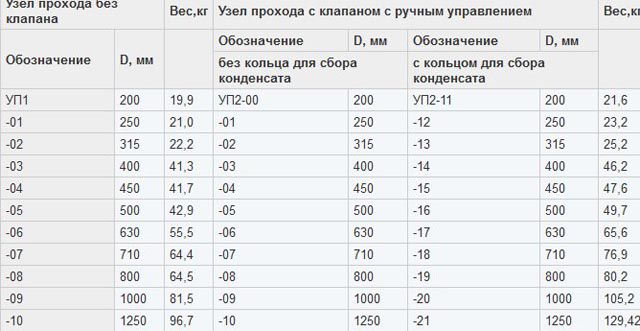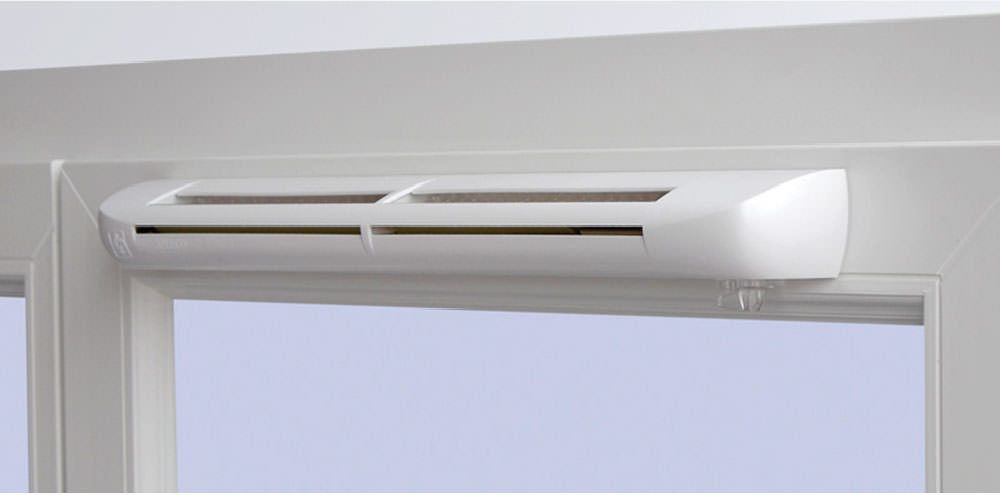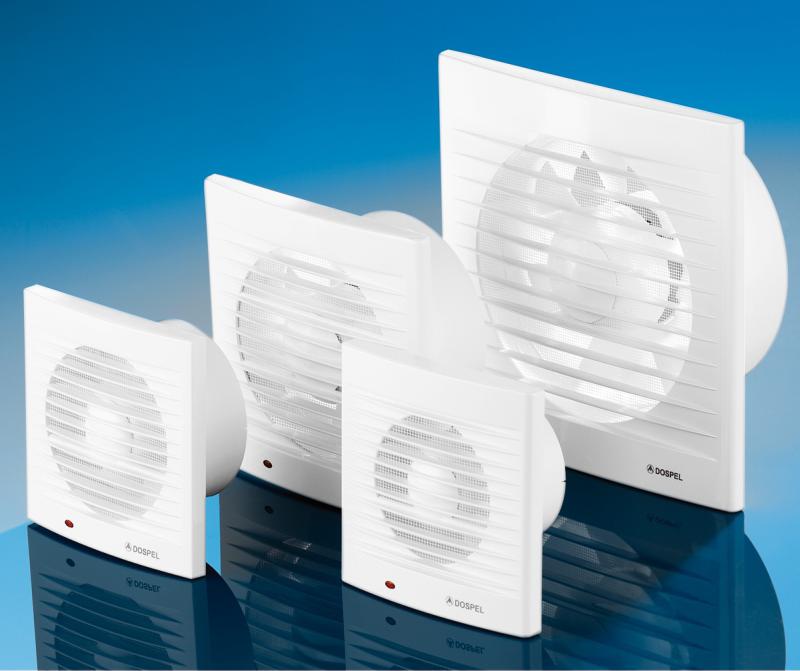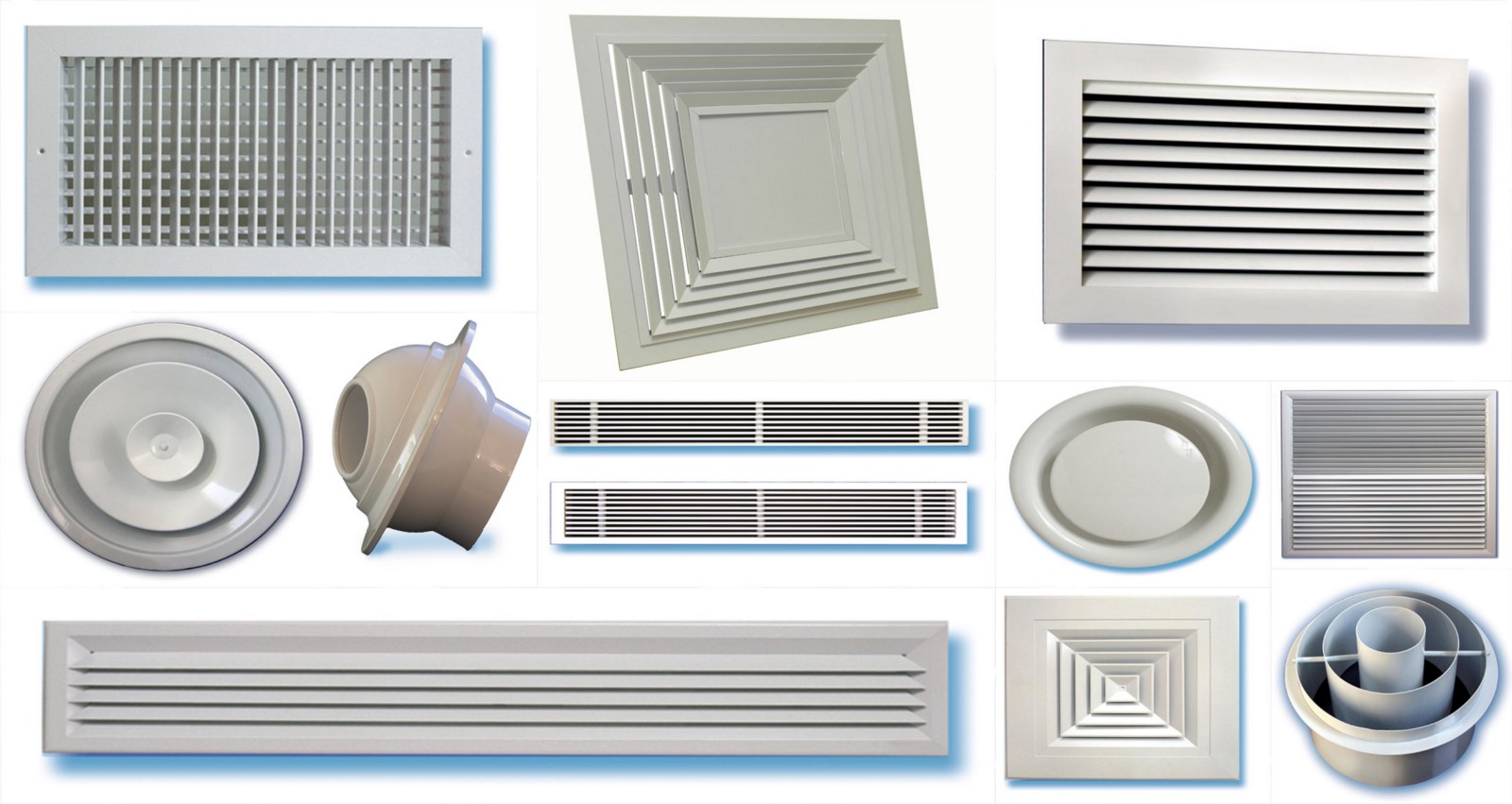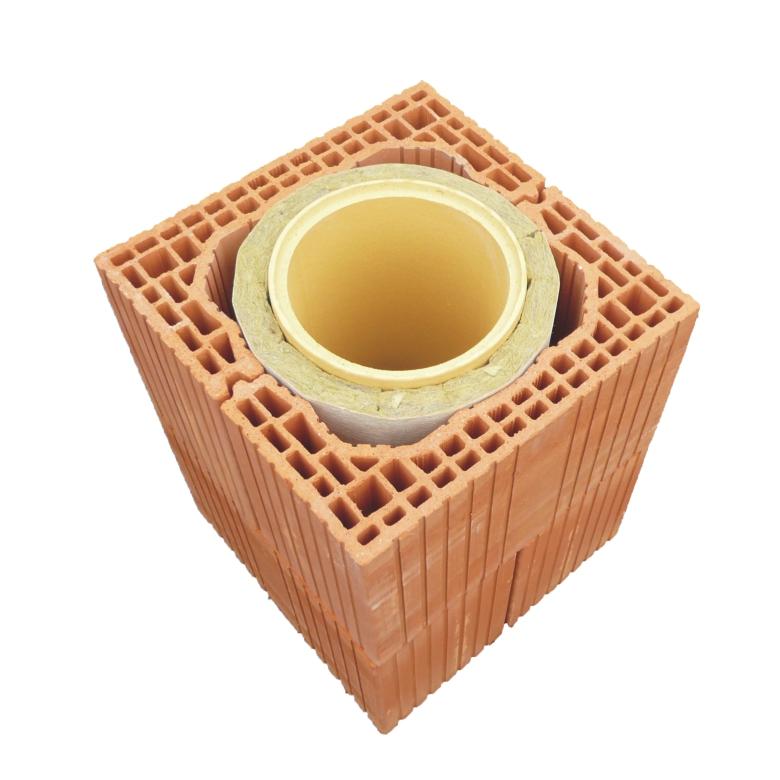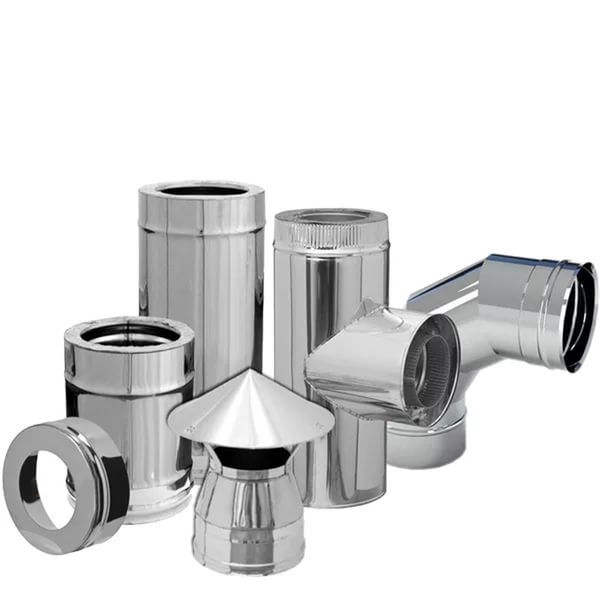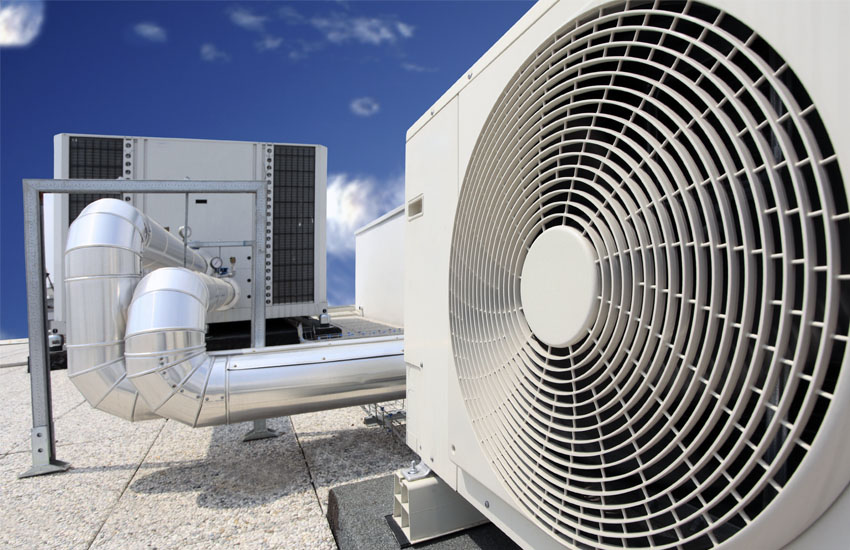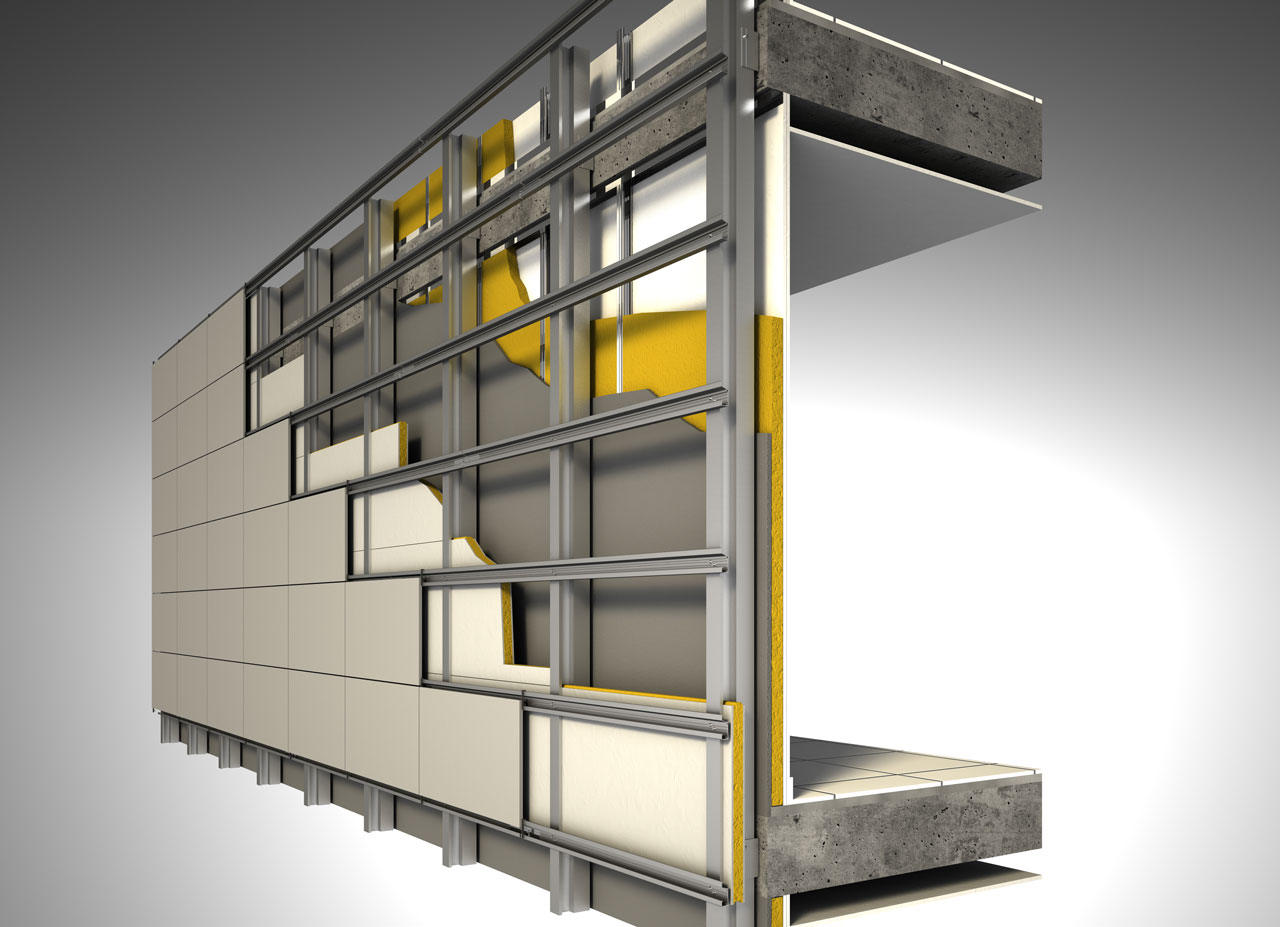If we are to build a cottage or a bathhouse, then on a large scale: with heating and ventilation. You just need to be prepared that these two systems bring with them a lot of difficulties. In this article, we will look at how to equip an air outlet through the roof.
First of all, you need to figure out what such constructions are used for:
- general ventilation of premises;
- ventilation elements of the roof structure, roof ventilation outlets;
- ventilation of sewer drains;
- outlet for kitchen and toilet hoods;
- outlet of the central vacuum cleaner and other ventilation systems;
The structure of the duct passage
Particular attention should be paid to the places of contact of the cap made of ethylene propylene (EPDM) rubber. It should be tightly pressed against the roof and against the pipe. It is the EPDM rubber that protects the knot from water.
The very node of the passage of the air duct through the roof is fixed in the area of the apron. The fastening must be strong, as the duct must withstand not only gusts of wind, but also the pressure of the snow. One way or another, in northern latitudes, additional protection is installed to protect against snow. Securing the assembly is important because the backlash causes the mastic or sealant to squeeze out to prevent leakage.
They can also look completely different, which does not affect the functionality of the site. Whatever task he performs, the design must meet certain criteria.
Why this element requires special attention:
- ventilation violates the integrity of the roof, so care must be taken to eliminate holes and gaps. Otherwise, the structure will begin to allow moisture to pass through, which will undoubtedly negatively affect its durability;
- the temperature difference causes deformation of the components;
- if we are talking about a chimney, it is necessary to equip with thermal insulation for fire safety reasons.
Installation of the duct passage assembly
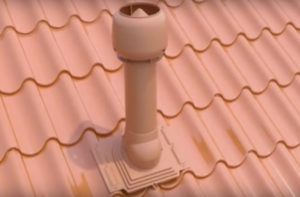
First of all, you need to choose a place on the roof where it is most advisable to place ventilation. First, you should pay attention to the wind rose and choose the location of the chimney so that the smoke goes away from the house. Secondly, it is equally important to determine the height of the pipe placement. The higher the pipe is, the stronger the wind is. In some cases, the wind can interfere with natural draft, which is unacceptable in houses with stove heating. On the other hand, if the pipe opening is located below the ridge, some condensation or soot can settle on the roof.
By the way, all these details are described in the fire safety recommendations. Allowable elevations of chimneys above buildings are below.
For horizontal roofs:
- above 1.5 m from the ridge of a nearby residential building. When the chimney is 1.2 meters higher than the roof level, regardless of the angle of its inclination, it is necessary to install guy wires;
- above the horizontal roof, the chimney must be located at least 0.5 m higher.
For pitched roofs:
- if the distance from the roof to the pipe is more than 3 meters, it should not be higher than the line that is drawn down from the ridge at an angle of 10 degrees relative to the horizon;
- with a distance from the ridge to the pipe from 1.5 to 3 meters, the height of the pipe must not be lower than the ridge;
- in other cases, the pipe should rise 0.5 meters above the ridge.
Step-by-step installation
- A hole with a diameter for the duct is cut in the roof. At the same time, if it is a chimney of a boiler, fireplace or stove, it is necessary to provide for the installation of thermal insulation in order to avoid the risk of ignition of the roof insulation, lathing or waterproofing. To do this, it is enough to attach the rubber cap of the knot and draw a marker around the inner circle. Further, according to the figure, a hole is cut and / or sawn through.
- Further, the lower part of the hood is treated with moisture-resistant sealant glue and is pulled into place with the help of roofing screws.
- In this case, another protective cap is put on top and is also attracted by roofing screws.
- The pipe itself is attached to it.
- From below, the hydro and vapor barrier are fixed with an additional lining.
Snow apron for pitched roof
To protect the roof from snow and from leaks, it is customary to use power aprons. Fastened tightly to the roof lathing.
The top edge of the apron can be up to 20 cm high.
However, many builders find it possible to do without the use of such an apron. The solution to this problem is to install the assembly directly on the ridge of the roof.
Air duct through the ridge
There are not many functional advantages of this method. First, the snow load is removed from the base of the node. Secondly, it becomes possible to conduct ventilation directly under the ridge, which is sometimes necessary on the attic floors. Ventilation under the ridge does not disturb the interior and frees up space. Another advantage is the design, because there are connoisseurs of just such an architecture.
The disadvantages include the already mentioned wind, which can impede traction. The need for additional fixation of the pipe. However, the biggest challenge is the need to invade the structural roof structure. Those. to make an air duct through the ridge, it must be broken and reconnected, making room for ventilation in the center. The rafter is a very balanced system, and such interference can cause irreparable harm. Therefore, ventilation through the ridge must be attributed to complex structures and taken, having thought and calculated everything.
Node marking
At the moment, the construction market offers 11 types of ventilation passage units.
The letters "УП" are generally accepted markings. If there are no elements in the design of the assemblies, this is indicated by the numbers from 1 to 10. These include a condensate collection ring and a valve.
Figures 2-10 indicate that the structure is equipped with a controlled valve, and there is no condensate collection ring.
Symbols "UPZ-UPZ-21" indicate that the passage unit is fully equipped: manual remote control, valve, condensate ring.

